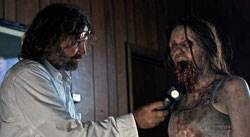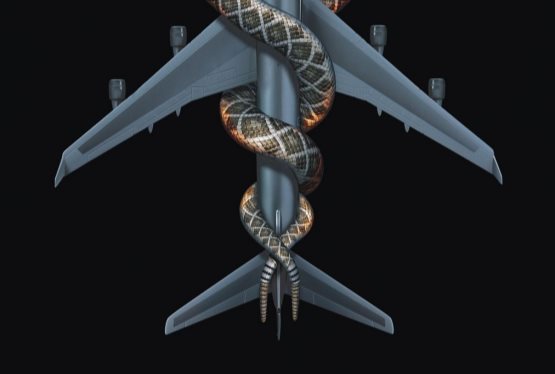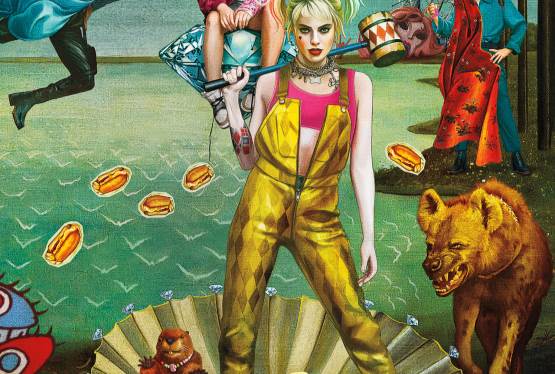
The cinematographer for Friday Night Lights and Firefly explains how you make daylight terrifying, compares The Walking Dead with Westerns, and describes how Walkers are more dangerous than Reavers.
Q: How did you get involved with The Walking Dead?
A: Gosh, I don't even know. I've never worked with Frank Darabont before; I think they just looked at a bunch of reels and resumes and called me up. That was it.
Q: Have you ever had a desire to shoot a zombie series?
A: No, but you know I came up through the camera department in horror movies -- I crewed on Re-Animator, From Beyond, and all those Empire Pictures movies. So I'm used to things like that.
Q: Horror movies usually take place at night. This series takes place mostly during the day. What are the challenges to that?
A: I think the challenges are to just get the idea that there's something to be afraid of around every corner. Because it's daylight you're not normally scared -- we're scared at night. But the levels of this are brilliantly laid out by Frank: The rooftop is a little safer than street level, street level is really terrifying, and below street level gets safer. So the scary places start to be the safe places, and the safe places start to be the scary places.
Q: What kind of visual tricks do you use to enhance this feeling of danger?
A: Just to play it as normal as possible, and prey on the fact that everyone knows that it's scary [Laughs]. We do tricks like we make it a little cooler -- like the warmth has disappeared from the world. And we use film so that the blues come out a little stronger, but I'm trying hard to keep it purely on a psychological level. Also, it's normal policy to make a camera perfectly level with the horizon, but not here. We don't do the obvious tilt left or right, but all things are a little bit off. My aim is to make it off-kilter enough to where there's just something subconsciously wrong with every image -- it starts to become a world where nothing's right.
Q: You're responsible for the show's lighting and color, but your source material is a black-and-white comic. What inspiration can you draw from it?
A: Oh all kinds. Everything comes from the comic book. And then Frank's taken it to its own place where it needs to be for us. Photographically all I've done is take most of the color out -- I've desaturated things and I'll bleed the color out. It's still a color image, it's still acceptable for television (because you can't put a black-and-white show on television anymore) --
Q: You'd like to try, I take it?
A: I would love to try. I think we should just do it! Any convention out there I think we should put our foot through it. That said, we have to do it with color, so we'll just take the color out a bit, and bring it back within the realm of what was originally intended by Kirkman.
Q: Is that a situation where the decision to shoot on 16mm film is useful?
A: 16mm is the perfect choice. Regardless if we did it in HD or 35mm film, we'd add grain in the end to make it have this look. It calls up the language of what we're used to seeing in a horror film. George Romero's stuff was all grainy. It's like looking at a documentary, and you instantly get into the 16mm documentary world. And if you take those same cameras and put them into The Walking Dead, it begins to be a believable, real experience. We were looking at a day exterior the other day, and it became scary -- the moment when you realize it's possible to do something this frightful in broad daylight.
Q: You're used to shooting Westerns, having shot a few episodes of Deadwood and all of Firefly. Do you see any Western themes in The Walking Dead?
A: [Laughs] Yeah, I think that's encapsulated in Rick Grimes, right? I find myself thinking about Firefly from time to time on set. In both we made the choice not to embellish an image -- in my lexicon, it would be not adding backlight, which is a product of working on a soundstage. In a practical location like where we are, we choose not to make it pretty, and to instead have it be a bunch of people on the edge of life.
Q: Speaking of Firefly, which is scarier: Reavers or Walkers?
A: You know those Reavers were awful scary, but these Walkers don't have a purpose other than to eat things. So they're slower, but they're more inexorable. They're just not going to stop, no matter what, so I'd go for the Walkers. The Walkers occupy my thoughts at night a lot more than the Reavers. The Reavers I could kind of laugh off. [Laughs]
Tags: the walking dead, david boyd, interview



